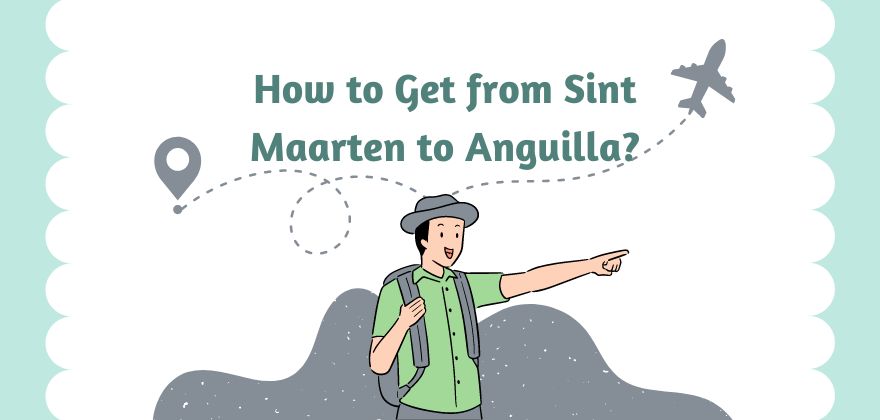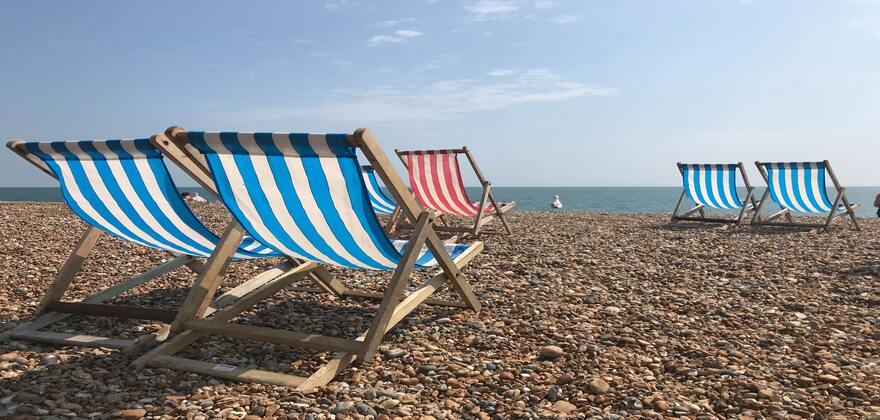How Long Does it Take to Climb Kilimanjaro?- Different Routes
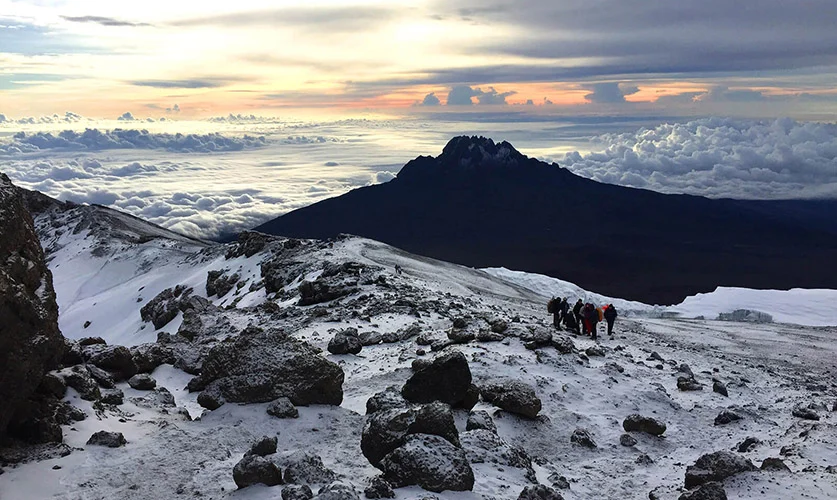
Travelers planning to climb Kilimanjaro often ask, how long does it take to climb Kilimanjaro? Although Kilimanjaro is known as a “walking” mountain, you shouldn’t underestimate it and its risks. The Kilimanjaro route and its variants take 5 to 9 days to complete. Read more about the best routes to climb Kilimanjaro and how long it takes.
Factors Affecting Time to Climb Kilimanjaro
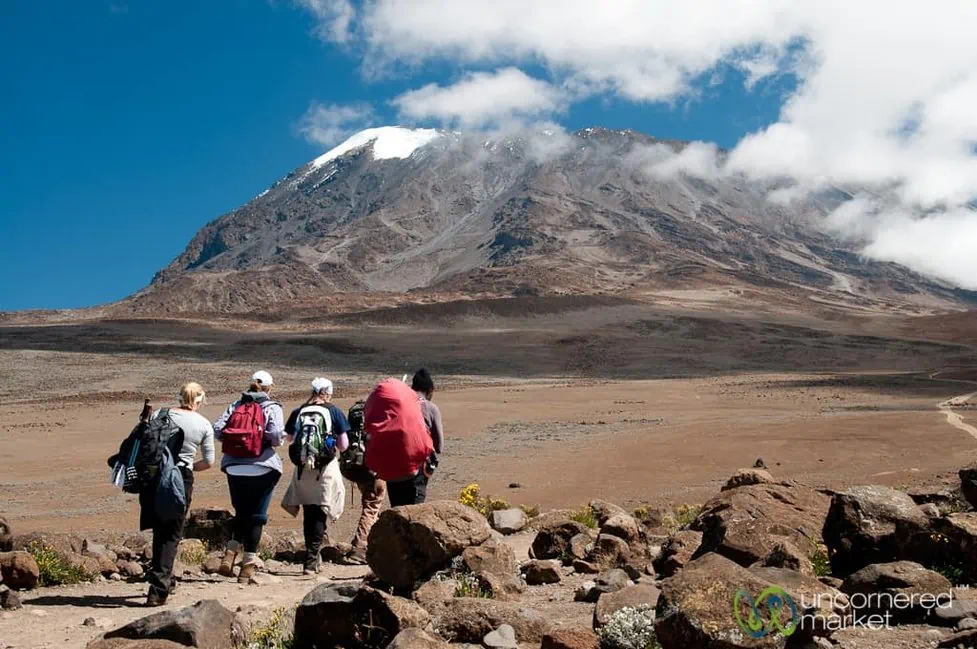
Adapt to the Environment
The main reason climbers fail to reach the summit of Kilimanjaro is simply that they are not acclimated to the altitude.
How much do you want to get to the top? If you really want to finish the climb, the main thing holding you back is acclimatization.
Rate of Ascent
Taking your time allows your body to gradually adjust to the lack of oxygen.
The longer you acclimate to the mountain, the better your chances of reaching the summit. Travelers who spent only 5 days on Kilimanjaro had the lowest success rates, while those who spent 8 to 9 days had a much better chance of standing on an African rooftop. How long does it take to climb Mount Kilimanjaro?
In terms of meters per day, controlling the rate of ascent is “an efficient means of preventing altitude sickness”.
The slow, steady climb gives your body time to adjust to the altitude, and while physical fitness doesn’t seem to have an impact on your ability to adapt, you’ll have plenty of time to rest and recover after a day of hiking.
Healthy Body
Being physically fit will make hiking easier and reduce fatigue and stress, but it won’t help you acclimatize.
According to Dr. Hackett of the Institute of Altitude Medicine, being physically fit won’t make you immune to altitude sickness. At times, many healthy young adults overcome discomfort and ignore important symptoms.
Altitude
The biggest obstacle to successfully climbing Mount Kilimanjaro is the rapid increase in height from the base to the summit. Almost all climbers are affected by altitude. These symptoms include headaches, difficulty breathing, and insomnia, as well as more unusual and potentially fatal conditions such as pulmonary or cerebral edema.
The best way to minimize the more severe effects of altitude is to adapt to the climate. This means allocating as many days as possible for promotion. Those who climbed for more than eight days were three times as likely to make it to the summit as those who climbed for at least five days.
It also helps to spend a few days at mid-altitude areas such as Ngorongoro Crater, Arusha National Park or Mahlangu before climbing. Once up the mountain, hike at a slow, steady pace, not to get to camp early.
Season
Weather conditions on Kilimanjaro vary greatly with the seasons. Sub-zero nighttime temperatures and high winds are possible at any time of the year, but it is best to climb in dry conditions. Therefore, hiking from January to March or July to October is much better than the rainy seasons of April to June and November to December. If other factors force you to plan a climb in the rainy season, try the Longgai route, the only route that sticks to the dry north slope.
Fitness
A reasonable level of fitness is required to successfully climb Mount Kilimanjaro. If you’re an inexperienced hiker, it’s worth developing a training program that will allow you to easily hike through the hills for about five hours. Ideally, use training hikes to break in your boots and get used to the daily activities you’ll be doing on the mountain. Running and cycling can also help improve your aerobic fitness.
How Long Does It Take To Climb Mount Kilimanjaro on Different Route?
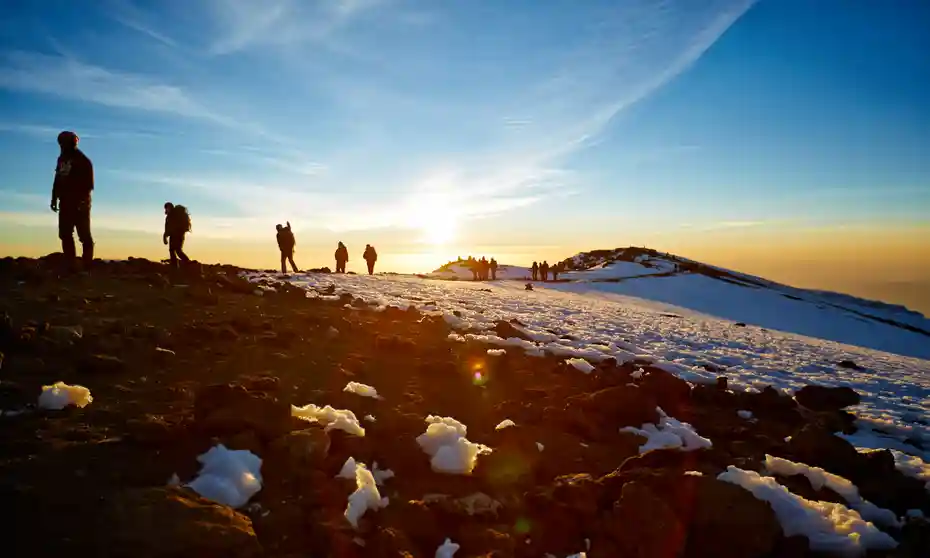
Kilimanjaro Route Choice
How long it takes to climb Kilimanjaro largely depends on the route you choose. There are six main routes, all with their pros and cons. Most hikers use the Kilimanjaro route as it is faster, cheaper and in many ways more convenient than other routes. Unfortunately, the Kilimanjaroroute also suffers from overcrowding. Among other routes, Machame is a popular compromise for cost-conscious travelers looking to avoid crowds. Syrah, Lemochau, Ronggay and Nordschleife are scenic, progressive and quiet options more suited to solitude and wealthy outdoor couples.
There are two other routes: Umbwe and Mweka. These fast but steep routes are only restarted by experienced climbers who don’t require much adaptation. However, the Mweka route is often used as a fast descent route by those ascending via Machame, Shira or Lemosho.
Marangu Route
Minimum 5 days; Recommended 6 days. Marangu is the most popular route on Kilimanjaro, attracting more climbers than the other five options combined. It starts at Marangu Gate, near the well-equipped town of the same name. The five-day, four-night trek includes overnight stays at Mandara hut (2700m/8858ft), Horombo hut (3720m/12205ft), and Kibo hut (4703m/15430ft) en route to the climb. It returns to the Horombo hut as it descends. The six-day change added a second night in uphill Horombo. This longer version reduces the risk of highly relevant issues and increases the chances of a successful summary. It also gives you a full day to explore the extraordinary vegetation of Africa’s alpine regions.
Marangu has several advantages over other options. This is clearly the cheapest option for budget-conscious climbers, in part because it can be done in five days. It’s also the least difficult route, has the best rescue services, and is the only route where you can sleep in a cabin with shower facilities. Some cottages even sell bottled drinks, hence the nickname “The Coca-Cola Route.”
Machame Route
Minimum 6 days; Recommended 7 days. The second most popular route on Kilimanjaro includes some tough sections, but the ascent is gentler and more scenic than Marangu. From the altitude, it allows for more acclimatization, especially if you opt for the seven-day-six-night option. The climb involves nights at Machame Hut (2890m/9482ft), Shira Hut (3840m/12598ft), Barranco Camp (3950m/12959ft) and Barafu Hut (4600m/15092ft). Despite the misleading name, there are no longer functional cabins on this route; you need to camp.
Shira Route
Minimum 6 days; Recommended 8–10 days. This lovely but little used route up the western flank of Kilimanjaro starts at Shira Gate (3,590m/11,778ft) and connects with the Machame Route prior to summiting. It involves a gradual multi-day ascent through a little-visited tract of Afro-alpine moorland known for its striking volcanic rock formations. There is also the possibility of seeing eland, buffalo and other large mammals. Altitude-wise, the Shira Route starts out above the 3,500m/11,483ft contour, which gives you plenty of time to acclimatize before summiting. It can be done over six days, but an additional day or two is advised.
Lemosho Route
Minimum 6 days; 8-10 days recommended. One of the most beautiful routes on Kilimanjaro, Lemosho, like Shira, starts on the western slope, but at a much lower elevation. This means you’re less likely to experience altitude-related issues on day one. It also has the advantage that you will spend your first day in the woods, below the start of the Shiraz route. The next day, the Lemosho route joins the Shira route.
Northern Circuit
9 days minimum; 10-11 days recommended. Glaciers on top of Mount Kilimanjaro in Tanzania, surround the crater. The most remote route of Kilimanjaro starts at Lemoho, then goes north around the peak, and then reaches the summit from the east. This is the longest route and takes at least nine days. Inside Kibo Crater, however, there is an option to extend the trip by one or two days to one night, which is a highly recommended experience. There is a full week before tackling Uhuru Peak. This gradual ascent means this route has the highest success rate but is the most expensive option.
Rongai Route
Minimum 6 days; 7 days recommended. Rongai is the only uphill route on the north side of Kilimanjaro. It forms during the rainy season as it receives far less rainfall than either of the southern routes. At other times, it’s also a great option, offering a reasonably gradual ascent and an above-average chance of encountering large wildlife. It’s also very uncrowded, at least the day before it meets the Marangu route at Kibo Hut. The seven-day change brings a much higher success rate than the six-day basic route.
When Is good To Choose a shorter Kilimanjaro Climb?
If you have been to high altitudes recently. For example, if you successfully climb Mount Meru or Mount Kenya, you will have an acclimatization element to take a shorter route.
If you are an experienced climber who has been to extreme altitudes (>18,000 feet) before and feels confident in your ability to adapt.
The undeniable fact is that a longer route would increase the success rate of the summit.
How long Does It Take To Descend Kilimanjaro?
Kilimanjaro takes about two days from the summit of Uhuru to the finish. The descent can take 5 hours to reach the camp overnight, and 4 to 6 hours the next day, depending on the route and the hiker’s experience.
Preparations
Kilimanjaro can be cold and possibly humid at night, with strong tropical sunlight at high altitudes during the day. The following items are necessary or highly desired for a successful hike:
- Wind and Waterproof Jackets and Pants.
- Lots of warm clothing.
- waterproof gloves.
- One pair of thick hiking socks and thin inner socks per day.
- Wide hat and UV sunglasses.
- A pair of tattered 100% waterproof hiking boots and lighter shoes for evening wear.
- Adjustable trekking pole.
- All-Season Sleeping Bag and Premium Floor Mats (if not provided by the operator).
- Waterproof bladder or water bottle with a total capacity of 2 liters/68 ounces.
- A medical pack containing pain relievers, anti-inflammatories, foot blister plaster, sunscreen, cracking cream, and medication to reduce the risk of altitude-related problems.
- Lots of stored energy-rich snacks, such as dried fruit, nuts, chocolate, and energy bars.
Final Words
Different routes can affect the time it takes to climb Kilimanjaro. Climbing Kilimanjaro is a once-in-a-lifetime experience: you’ve trained for it, and you’ve paid for it, don’t jeopardize your safety or your chances of success.

